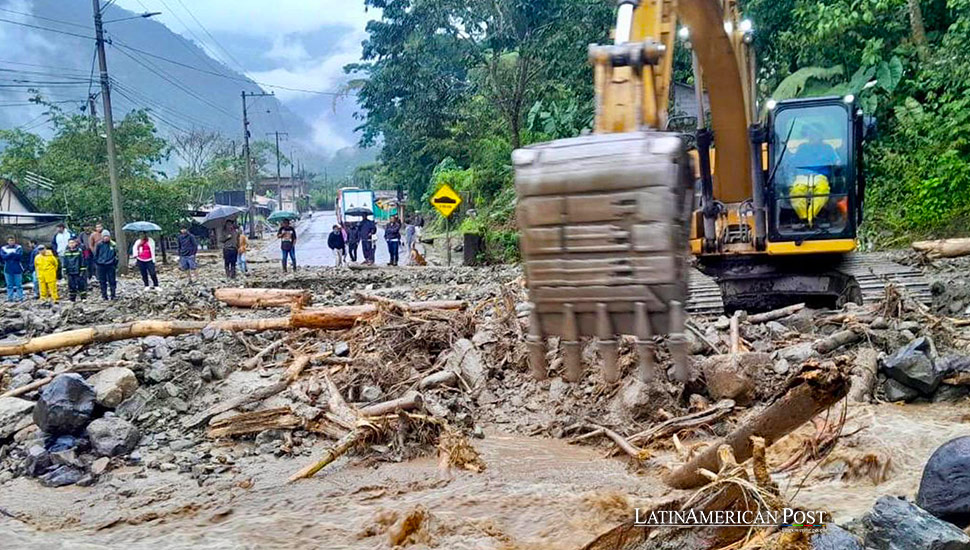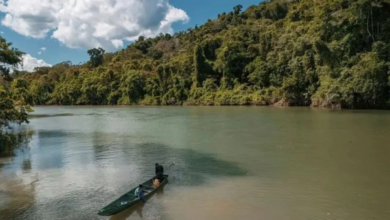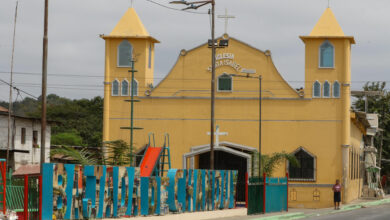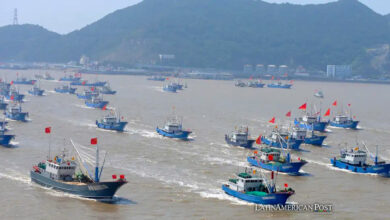Tragic Landslides and Torrential Rains Devastate Ecuador and Central America

At least six people have been killed and several homes buried by landslides in Baños, Ecuador, following days of torrential rain. The disaster has led to a state of emergency, with extensive damage and ongoing rescue efforts in the region.
At least six people have been killed in landslides in the central Ecuadorean city of Baños. The tragedy occurred after days of torrential rain, causing mud to career down a hillside, burying several homes, and injuring more than a dozen people. Officials have declared a state of emergency in Baños as heavy machinery is deployed to clear roads blocked by rocks and mud. Local authorities have confirmed that five of the six victims were from the same family. Meanwhile, torrential rains across Central America’s Pacific coast have claimed the lives of at least 11 people in El Salvador and displaced nearly 900 people.
Landslides in Baños: A Community in Mourning
The picturesque city of Baños, known for its hot springs and scenic views, has been transformed into a scene of devastation. The relentless downpour over several days caused landslides that buried homes under tonnes of mud. Emergency responders rushed to the scene, but the destruction was already significant. The landslide has cut off a main road, further complicating rescue and recovery efforts.
Among the victims were five members of the same family, a heart-wrenching detail that underscores the personal tragedies unfolding amid the broader disaster. Local media have been covering the aftermath extensively, capturing the grief and resilience of the affected community.
Emergency Measures and Community Response
In response to the crisis, Baños’ authorities declared an emergency. Residents have been advised to stock up on bottled water as severe rains have jeopardized the tap water supply. The city’s mayor has urged locals to stay home to minimize traffic on affected roads. At the same time, schools have shifted to online classes to ensure the safety of students.
A shelter has been established for those who have lost their homes, providing temporary refuge and support. Heavy machinery has been deployed to clear blocked roads, and an urgent task has been made to restore access and facilitate further rescue operations.
Meteorologists have attributed the heavy rains to an area of low pressure that moved over Ecuador on Sunday. This weather system has since moved north, impacting other countries in the region. The severe weather comes on the heels of a drought that had gripped Ecuador just months earlier, highlighting the region’s vulnerability to extreme weather patterns.
El Salvador and Central America Hit Hard
The impact of the torrential rains extends beyond Ecuador. In El Salvador, civil protection authorities reported that 11 people have died due to the severe weather. Victims, including children, perished in landslides or accidents caused by falling trees. Nearly 900 people have been evacuated and are currently in temporary shelters.
Civil Protection chief Luis Amaya has issued a stark warning to residents, urging them to evacuate if necessary and to move to safer areas if they live near slopes. His message underscores the priority of safety amid ongoing rescue and relief efforts.
Regional Impact and Warnings
The heavy rains have affected a wide swath of Central America’s Pacific coast, from southern Mexico to western Panama. Videos on social media have shown streets transformed into rivers, fallen trees, families evacuating on trucks, and emergency responders working tirelessly to clear roadways.
In neighboring Honduras, authorities have also launched evacuations. Over 5,000 people have been affected by flooding, particularly in the southern department of Valle, which borders El Salvador. In Panama, alerts have been issued, though severe damages have not been reported.
The Pacific and Atlantic hurricane seasons have begun adding to the region’s woes. The Atlantic season, in particular, is forecast to be especially active due to the La Niña weather pattern and warmer ocean waters. This could exacerbate the ongoing situation, bringing more rain and potential storms.
Resilience Amidst Adversity
The devastating landslides in Baños and the severe weather across Central America highlight the region’s vulnerability to natural disasters. Communities grapple with loss and disruption, yet they also demonstrate remarkable resilience and solidarity in adversity.
As emergency responders and local authorities continue their efforts, the focus remains on ensuring the safety and well-being of affected residents. Declaring a state of emergency, establishing shelters, and deploying heavy machinery are crucial steps in managing the crisis and beginning the recovery process.
Also read: Action Plan Needed for Marine Turtle Conservation Efforts During Ecuador COP11
The broader impact of these events, including the potential for further storms, underscores the need for comprehensive disaster preparedness and response strategies. The lessons learned from this tragedy will be vital in enhancing resilience and safeguarding communities in the future.





